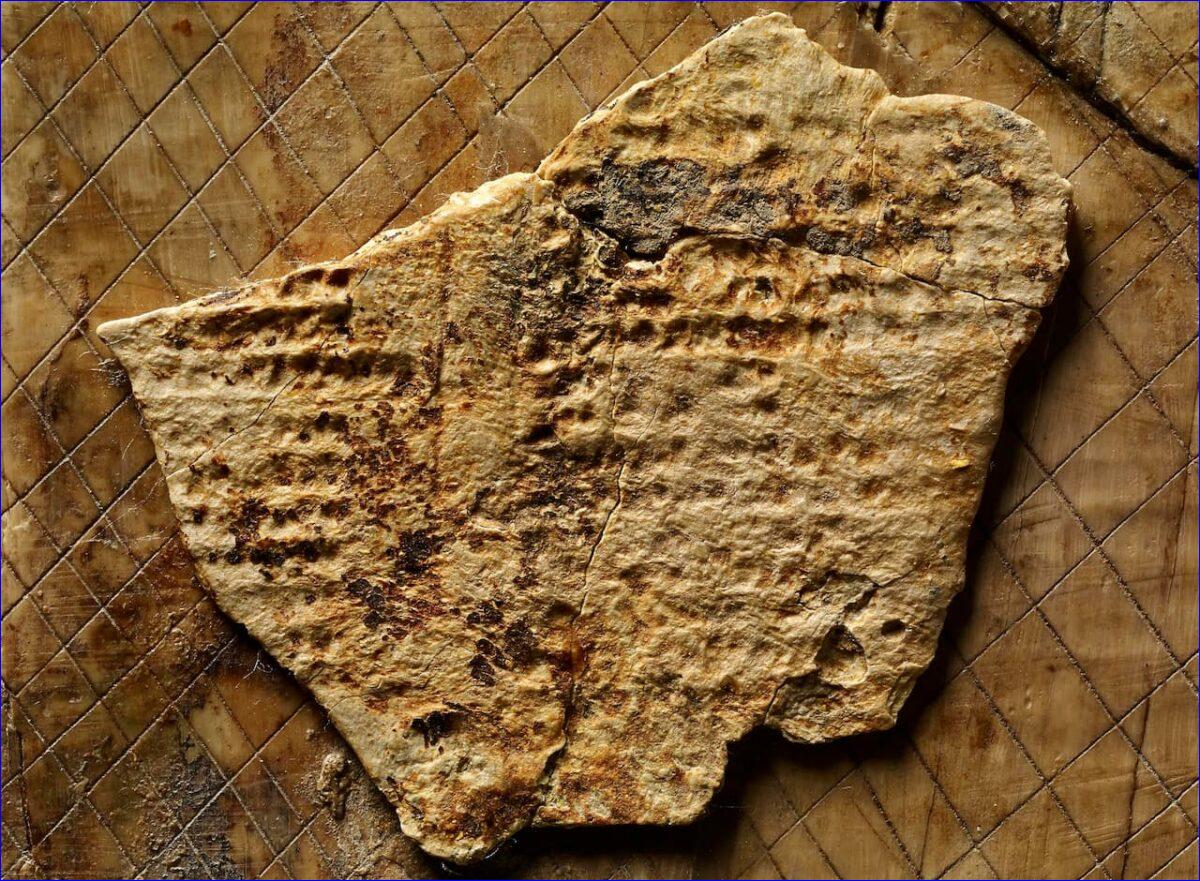


 The Trustees of the British Museum)
The Trustees of the British Museum)
Related: Read the full study
This study re-examines some board fragments in the British Museum using Fourier Transform infrared spectroscopy (FTIR), pyrolysis-gas chromatography-mass spectrometry with in situ silylation (Py(HMDS)-GC-MS) and gas chromatography coupled to quadrupole time-of-flight mass spectrometry (GC-QToF-MS) for the characterisation of the organic components of the wax paste.
Raman spectroscopy and scanning electron microscopy (SEM) were used for pigment and wood species identification, respectively. The results confirmed that the yellow paste is composed of beeswax mixed with orpiment. The wax components are particularly well preserved, and no organic additives were detected. GC-QToF-MS detected traces of wax even from areas of the boards where no visual evidence of wax survived.
Charred vegetable matter, consistent with the use of a carbon black pigment, suggests that writing boards with a grey/black colour, relatively common in Greek and Roman practices, were also produced in the Middle East. The wood was confirmed to be walnut, which is native to Southwest Asia. As no ancient Near Eastern recipe for wax writing boards has come to light so far, the information gathered is key to better understand this ancient practice, ground this knowledge in scientific evidence and enhance the contextualisation of wooden writing boards in the Middle East and beyond.

or register to post a comment.